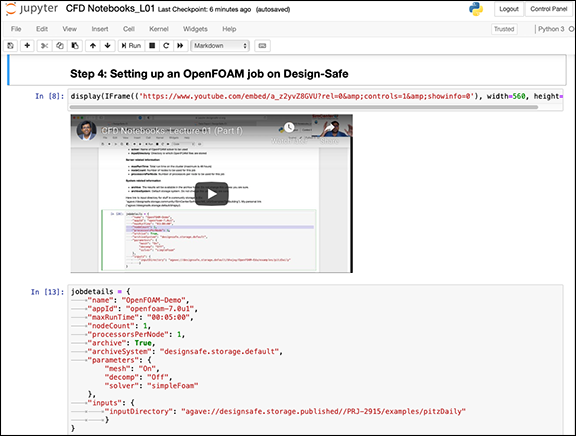Hydro-UQ and WE-UQ facilitate natural hazard research enabled by Computational Fluid Dynamics (CFD). These applications require a basic working knowledge of OpenFOAM, including mesh preparation and the generation of boundary conditions. To prepare researchers for these applications, CFD Notebooks is offered as an educational resource to introduce CFD through a series of Jupyter notebooks hosted on DesignSafe. It provides a foundation for all aspects of CFD as implemented in OpenFOAM, from running cases to programming. The notebook format interactively demonstrates running exercises and simulating cases in OpenFOAM without any software installation overhead by leveraging DesignSafe's High-Performance Computing (HPC) platform. The Jupyter notebooks consist of video tutorials, DIY examples, and reference reading materials. Working knowledge gained in this educational resource will build confidence in users, enabling them to easily transition to using these research applications to augment their research.
CFD Notebooks dedicates a Jupyter notebook to each particular topic. Experienced users can directly access topics of interest, while new users will benefit as they progress through the material. The topics covered include:
If there is another topic of interest to you, please share it as a feature request on our message board! Future enhancements to the CFD Notebooks will include:
Sample Image:

Getting Started with CFD Notebooks:
How to cite:
Harish, Ajay Bangalore; Govindjee, Sanjay; McKenna, Frank (2020) CFD Notebooks (Beginner).
DesignSafe-CI. https://doi.org/10.17603/ds2-w2x6-nm09.
Deierlein, G.G., McKenna, F., et al. (2020). A Cloud-Enabled Application Framework for Simulating Regional-Scale Impacts of Natural Hazards on the Built Environment. Frontiers in Built Environment. 6, 196. doi: 10.3389/fbuil.2020.558706.
